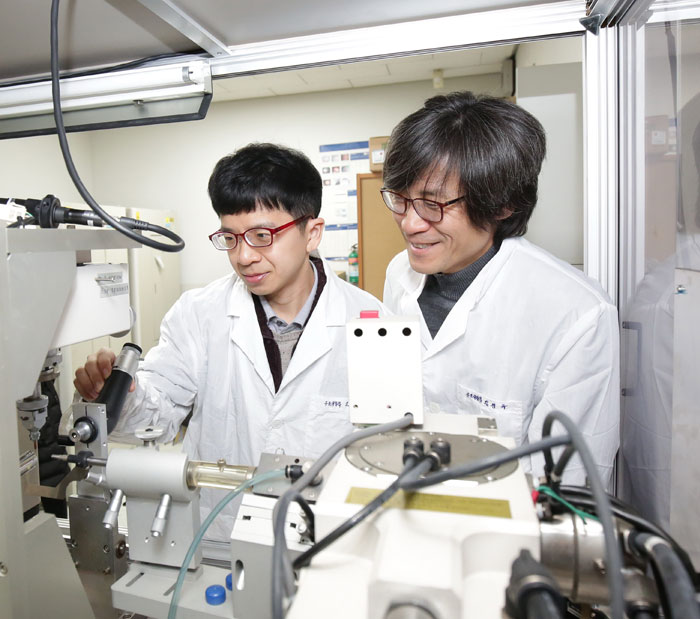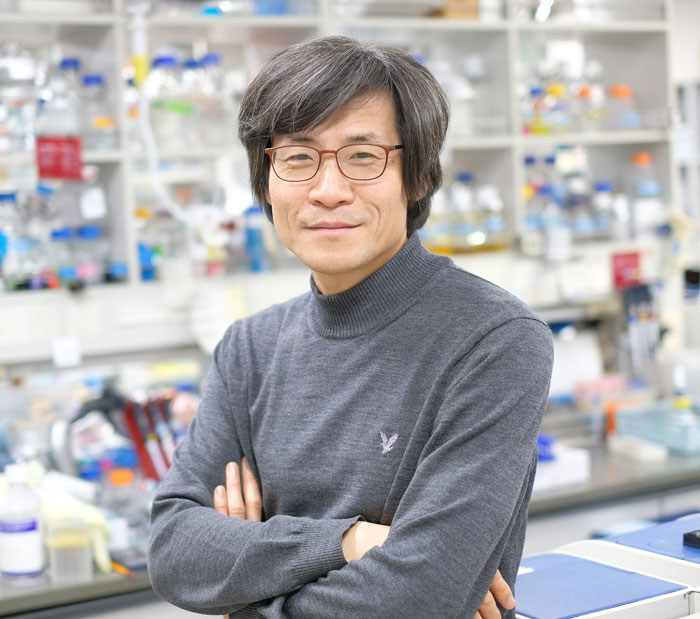Research Stories
Development of biocatalysts for anti-inflammatory drug synthesis
Improvement of enzyme activity using the structure-based protein engineering approach
Medicine
Prof.
KIM, KYEONG KYU
Dr. OH, CHANG SUK
So far, the method of chemical synthesis had been used to produce fine chemicals such as medicine. However, the synthesis carries problems such as low economic efficiency and use of hazardous substances. The use of environment-friendly biocatalysts is one of the solutions to overcome these problems. The key advantages of the biocatalysts are the specificity of enzymes to substrates, reactions and stereoisomers, which can reduce the complexity involved in the process of chemical synthesis. Another great advantage is that it reacts in conditions at mild temperature, on atmospheric pressure, or in aqueous solution. For these reasons, the biocatalyst is under the spotlight as the core part of green chemistry, with less by-products and hazardous waste produced during the synthesis process.
Protein engineering tools are applied in developing biocatalysts, by improving enzyme activities. There are two main streams in protein engineering: 1) directed evolution (the topic of Nobel Prize on Chemistry, 2018) and 2) structure-based rational design. Rational design is only applicable when structure and mechanism of the protein are available, but it is more efficient than the directed evolutionary approach.
Ketoprofen, a non-steroidal anti-inflammatory drug, is an analgesic or a fever reducer, releasing inflammation and pain mediated by rheumatoid arthritis or osteoarthritis. It is used in external painkillers in forms of gel or patches. Ketoprofen has two stereoisomers, S- and R-form, with the S-form showing higher drug effect. The US Food and Drug Administrator guides that stereo isomeric drug should be an enantiomer, not a racemate. The ketoprofen from racemate is required to be highly purified.
For high purity of ketoprofen in synthesis, Professor Kyeong Kyu Kim’s group identified 3D structure of esterase Est-Y29 complex, which is extracted from metagenomic library originated from soil in Korea, with (S)-ketoprofen in high resolution using X-ray crystallography. It showed that aromatic residues in substrate-binding pocket of the enzyme positively affects enantioselectivity of Est-Y29 to S-form by the interaction with ketoprofen ethyl ester (a precursor of ketoprofen). Based on 3D structural information of the complex, Kim’s group designed a mutant that has increased aromaticity in the substrate binding pocket and consequently succeeded in developing a new enzyme, whose enantioselectivity toward (S)-ketoprofen was about 5 times higher compared to wild-type. This research is noteworthy in its successful increase of protein function using rational design and the research has been published in ACS Catalysis Online on 2018 Dec 24.
Professor Kyeong Kyu Kim explained the significance of the research as follows: “In the research, we developed a new biocatalyst which may displace chemical catalysts, using a 3D structure-based, protein engineering approach. It also proposes a potency of production of effective medicines such as ketoprofen, through environment-friendly methods.”
Figure 1. The principal of enantioselectivity of Est-Y29
(S)-ketoprofen ethyl ester (SKE, magenta) forms π-alkyl interaction (pink dashed line) with aromatic residues (Y123, F125, Y170) in substrate-binding pocket of Est-Y29. However, most of the interaction was not shown to (R)-ketoprofen ethyl ester (RKE, blue), so S-form can bind to Est-Y29 more specifically.
Figure 2. Increased production of (S)-ketoprofen in Est-Y29 F125W
Replacement of phenylalanine at 125 in Wild-type Est-Y29 (top left) to tryptophan (Est-Y29 F125W, top right) increases aromaticity (orange) in substrate-binding pocket (cloud-like shape). The mutation increases affinity to S-form, and finally enhances (S)-ketoprofen production (bottom).


